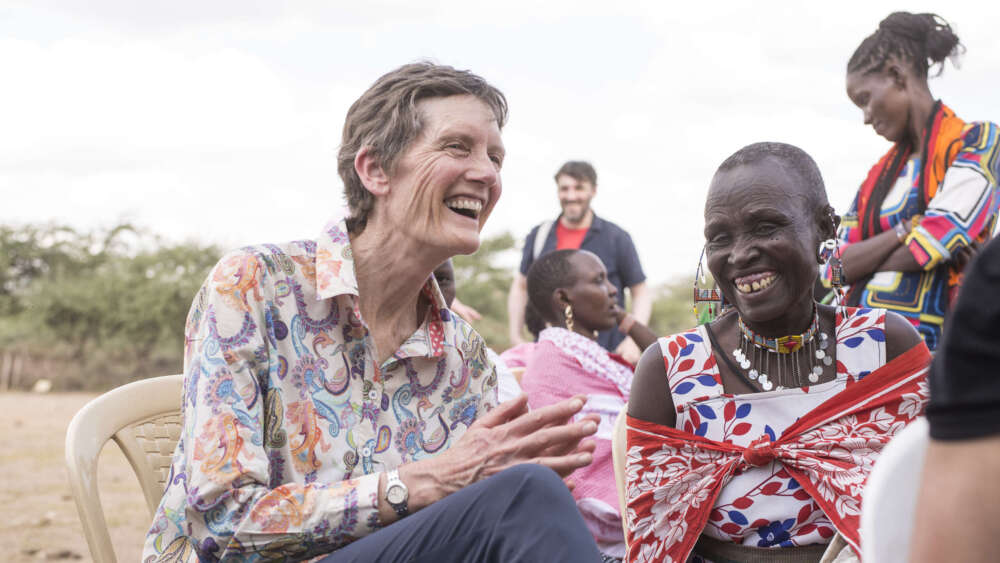Edwina Faithfull-Farmer loves camping in wide open spaces, looking at the massive stars and appreciating God’s beautiful creation. “It’s so restorative,” says the Director of International Programs for CBM Australia.
So when Edwina went to Kenya recently and saw the arid lands of a Masai herding community, she was thrilled – because, as a former environmental scientist, she’s always loved arid rangelands.
“We bashed our way out across this beautiful arid landscape. And I loved it because I felt like, ‘My goodness, this is so like where I worked in Western Australia’ – different species but the landscape quite similar. And I thought, ‘Oh, wow, this is wonderfully familiar in a crazy way.’
“So we beat our way out there on a bus, across pretty challenging tracks. And I thought, ‘Wow, the things they can do with the bus, just backing up and grinding their way through the gullies!’”
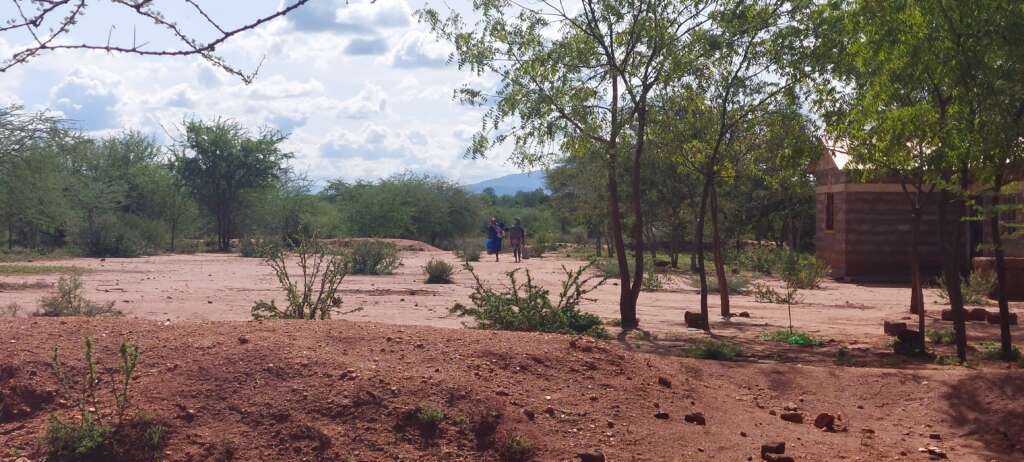
The beautiful arid landscape of Kajiado community, Kenya
In her work for CBM Australia, Edwina has the difficult task of deciding where the Christian charity puts its funding in the field. It’s a job that requires a great deal of discernment and wisdom to balance the best outcomes with the greatest needs.
She certainly witnessed some big needs on her visit to Kenya, where she was moved by the women she spoke to and by the humanitarian food crisis that so many in Kenya are facing. According to the latest data, 4.2 million people in Kenya are in need of humanitarian aid after the failure of the past four rains, producing the country’s longest drought in 40 years.
In this Kajiado Maasai community in the former Rift Valley Province, life is getting tougher for the herders, who walk with their animals to different places for food and water. But with little grass for livestock, the herders are having to walk further and further to take their animals to forage and find water.
“Now for this Maasai group of people, their livestock food and water is their primary concern, but their own food and water are also being challenged. So getting food now is getting more expensive, and it’s harder to find. And as they go further to find fodder and water for their livestock, they’re further from the market. So their whole lifestyle’s extremely difficult at this time.
“Their cattle hold a particular worth in their life. We might look at them and think it’s like a bank, but it’s more than a bank account to them. It’s almost like our family home – something that’s gaining in value. So they’re not about to cash them in, which is a huge challenge. And so many livestock have died, and their health is deteriorating. The government has offered to buy livestock and some have sold them, but they don’t really want to do that.”
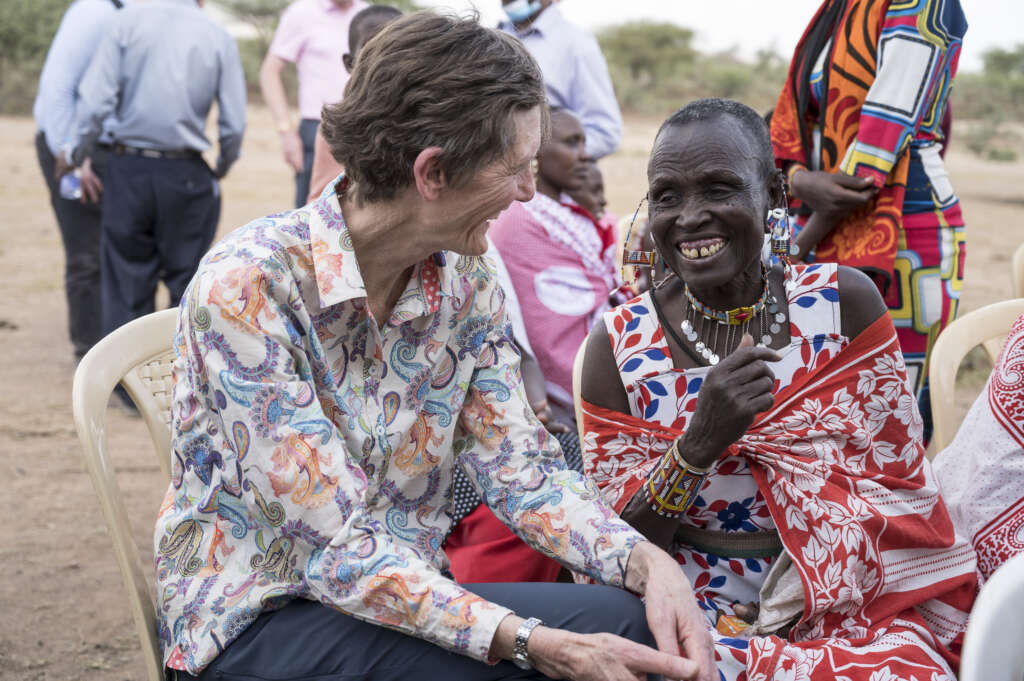
Edwina Faithfull-Farmer chats to a Maasai woman at Kajiado community in Kenya
Edwina was distressed at the thought of what would happen to this community if it doesn’t get the next rains as its dam relies on surface water, which is shrinking. She says the men and women of the community expressed a desire for access to bore water, but this was a project that could only be done with government assistance.
That said, the landscape was not yet a dust bowl. “The ground layer is pretty dusty, but it’s not wrecked. I was an environmental scientist originally, and I’m looking at it, going, ‘Wow, I would’ve expected this to look worse.’ There’s not a whole lot of grass, but there’s still some plants hanging on there and the shrubs and trees are in pretty good nick – that’s what the cattle must be living on. But as rains fail, then they’re not getting grass, and they’re not getting the lower storey of food.”
Edwina was greatly encouraged by what she saw at a health camp she visited, where several agencies were working together and working with the government.
“I love that they’re raising awareness of the government to this area because it’s not a high-value, high-interest area for the government, but this gets the government in there,” she says.
“I could see people walking around with medicines, and people were being referred on to cataract surgery … it was a big effort.” – Edwina Faithfull-Farmer
At the camp, doctors were screening people for general health, eye health, hearing, vaccination for kids, and treating what they could on the spot.
“I could see people walking around with medicines, and people were being referred on to cataract surgery, being referred onto other surgery that was needed and other services, so that was impressive – and it was a big effort.”
Another worry was what would kind of future the children of the community would have.
“We also visited the school, and there were a lot of kids there, so that might have been because the health camp was on or because we were coming. But I’m thinking, ‘What’s the future for these kids?’ You know, they need to be educated because they do need to be able to direct the future of their community – those are the next leaders. But they’re herders, and they don’t see education as valuable. The kinds of things that matter are understanding livestock, knowing how to read the environment, being able to have a family and have a good household.”
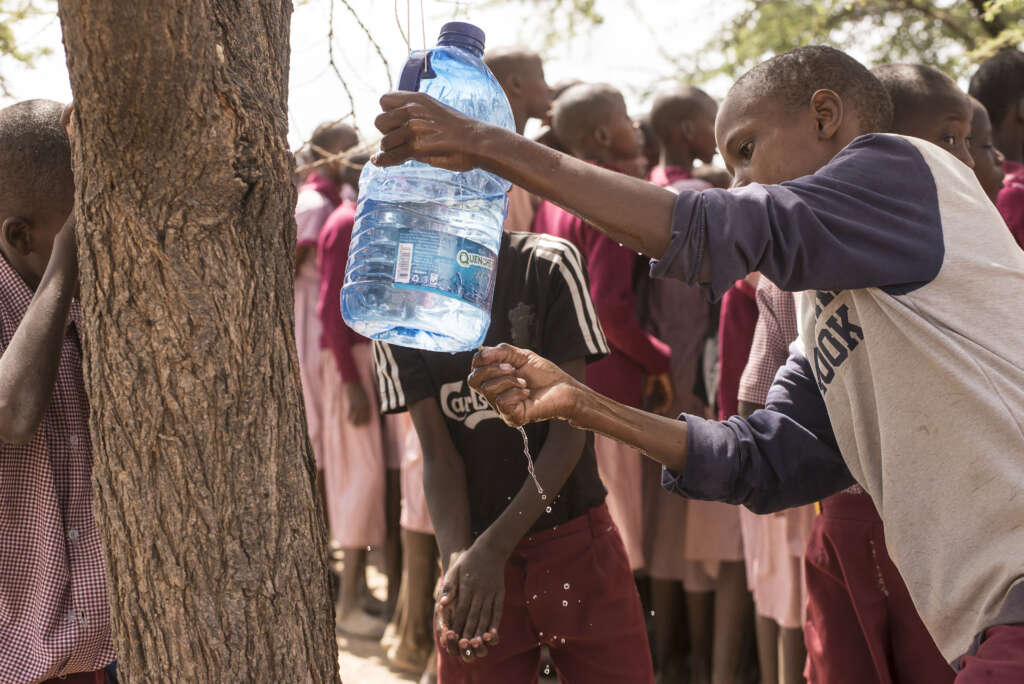 One exciting thing at the school was the way the children were being taught about the hygiene of the face and hands as a way of preventing communicable diseases, such as trachoma, a blinding disease that CBM focuses on and is also a problem in our Indigenous populations.
One exciting thing at the school was the way the children were being taught about the hygiene of the face and hands as a way of preventing communicable diseases, such as trachoma, a blinding disease that CBM focuses on and is also a problem in our Indigenous populations.
“So we turned up at the school, and the kids were all watching, and one lad was pulled out to show us what he’d learned about cleaning his face and hands. This school has worked out, of course, that you teach the kids, and they take the message home. So that’s clever.”
The other exciting experience was meeting the women of the community.
“Visitors were asked to please go and speak to the men, who were sitting over there under the tree. So some went and spoke to the men, and then a message came to us late in the afternoon that the women in the community would like to speak to the women. So we are all standing around under a tree, and the lead woman spoke so eloquently of what they needed and what they learned.
“There have been community workers and doctors who’ve worked with this community over many years, and it was just wonderful. There was a senior doctor there, and they were speaking directly to her. ‘We want to thank you that you’ve taught us that we need to be strong, and we need to bring up strong women. We mustn’t marry our girls when they’re 11. We no longer practise female genital mutilation. We know that that’s not good.’ And thanking the doctor for what they’ve taught them.”
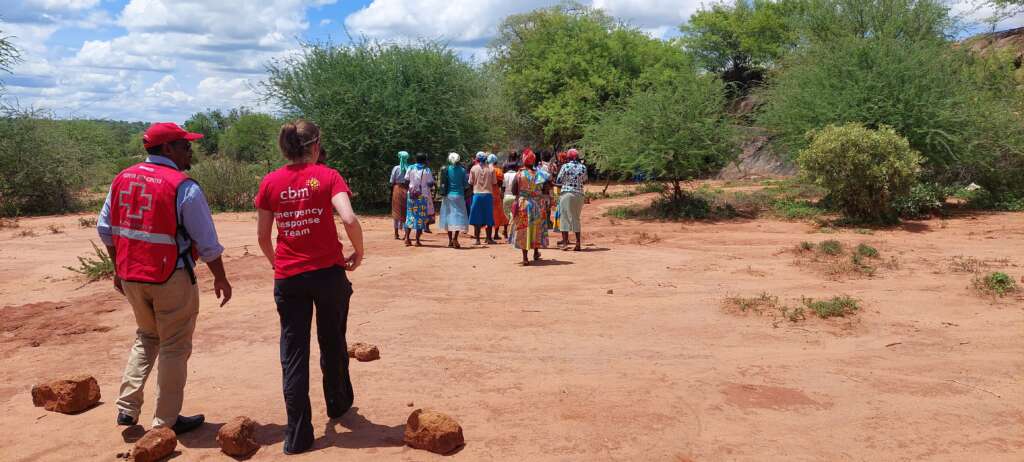 Edwina was heartened by the strength of these women, their strong sense of identity, and their ability to understand a different way of doing things while remaining true to themselves.
Edwina was heartened by the strength of these women, their strong sense of identity, and their ability to understand a different way of doing things while remaining true to themselves.
“They walk for miles and miles, and they face incredibly tough conditions, but these are strong people being helped to be even stronger. I was just very excited to see that combined effort in that environment with people who are considered not a high priority.”
Asked how her Christian faith drives her work, Edwina says she wants to be part of God’s people who are addressing injustices today.
“Bringing God’s love in that way of changing someone’s current situation is critical to me. I’m someone that likes action. I guess it’s God’s mercy, it’s God’s generous love. And it’s seeing human life flourish that brings that blessing.”
Pray
Some prayer points to help
Please pray that the rains come to Eastern Africa in particular, and pray for action on climate change. Please pray for CBM workers in Kenya, to have resilience in the face of difficult situations, wisdom in how they respond to those needs, and in their advocacy to the government.
Finally, pray for the leaders in that Maasai community so that they can see their dreams realised.
